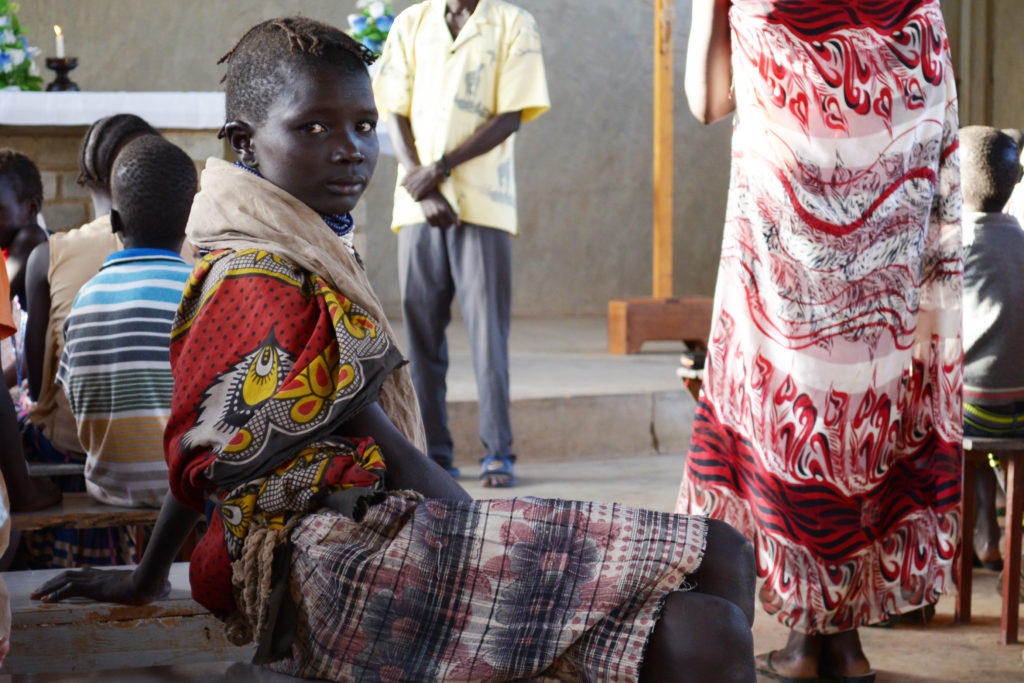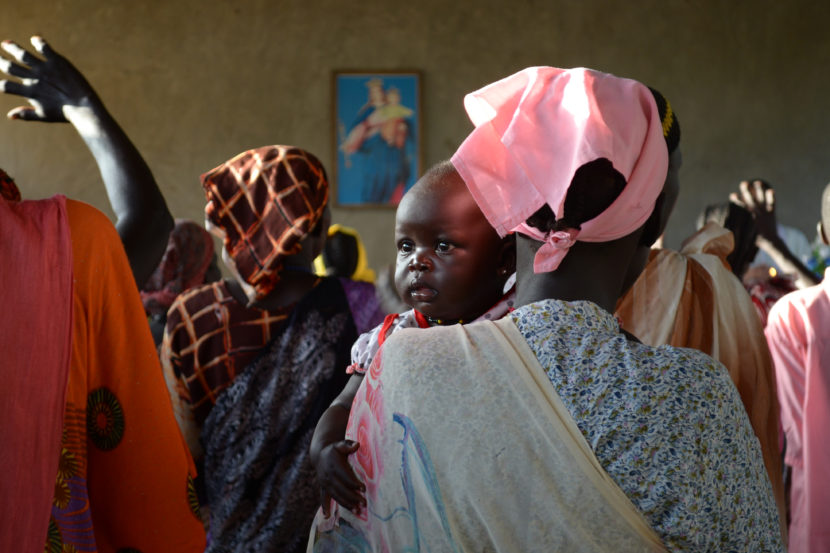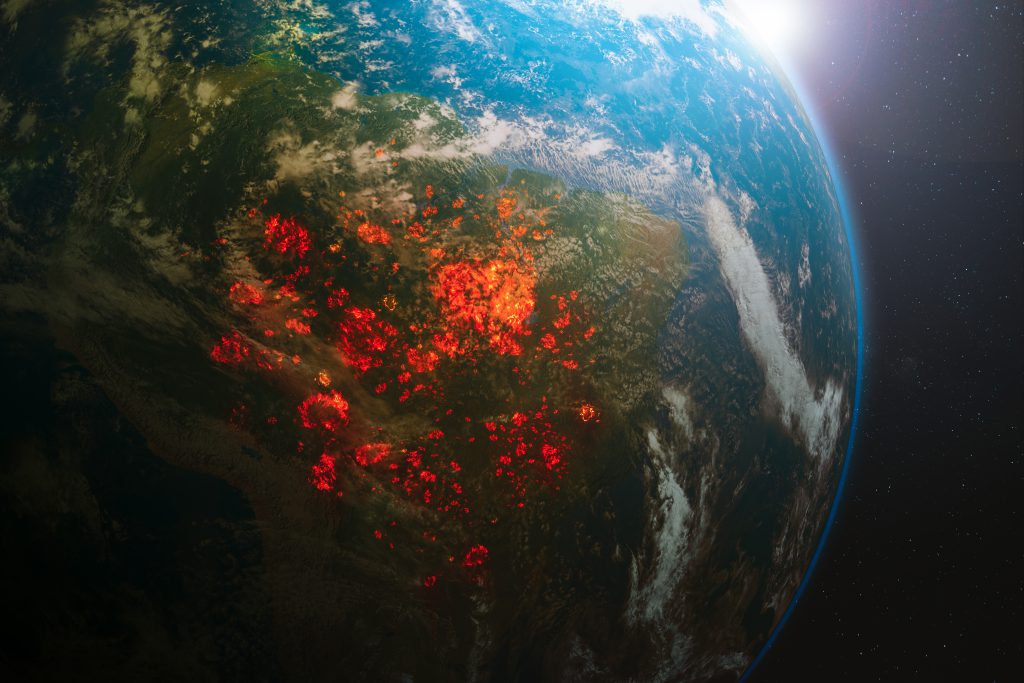Kakuma Refugee Camp, located in northwestern Kenya, has evolved from a temporary shelter into one of the world’s largest refugee settlements. Originally intended to house displaced individuals fleeing conflicts in Sudan, Ethiopia, and Somalia, the camp now hosts refugees from various nations. Among them, there are many children facing severe challenges in accessing their fundamental rights as enshrined in the United Nations Convention on the Rights of the Child (CRC).
Kakuma Refugee Camp overview
Kakuma Refugee Camp was established by the United Nations High Commissioner for Refugees (UNHCR) in 1992 following the arrival of the “Lost Boys of Sudan”, i.e., between 20.000 and 30.000 boys who fled South Sudan during the Second Sudanese
Civil War. It was also intended to provide shelter to Ethiopian refugees (Republic of Kenya, Department of Refugee Services, n.d.). Over time, Kakuma has expanded to accommodate a diverse refugee population, and as of January 2025, the camp’s population counted 300.000 people (UNHCR, 2025).
The Kakuma camp is divided into four areas: Kakuma 1, 2, 3, and 4. In addition to the camp itself, there is also the Kalobeyei Integrated Settlement in the vicinity, established in 2016 to decongest Kakuma and promote socio-economic integration with the host community. This settlement Kalobeyei consists of 3 villages: Village 1, 2, and 3 (Republic of Kenya, Department of Refugee Services, n.d.).
Despite the efforts to decongest the camp and integrate the residents into local communities, the camp continues to face serious challenges related to resource allocation, infrastructure, and protecting vulnerable populations, particularly children. While the exact number of children residing in the Kakuma camp is not known, the 2025 data shows that over 50% of refugees currently in Kenya are under the age of 17, which can serve as an indicator of the approximate number of children located specifically in the Kakuma camp (UNHCR, 2025).
Poor sanitation and its impact on children’s health
The Kakuma camp was initially planned to accommodate around 90.000 individuals. Despite the Kalobeyei Integrated Settlement establishment, the camp remains overcrowded, stretching the limits of the decades-old infrastructure and available resources (Republic of Kenya, Department of Refugee Services, n.d.).
One of the main points of concern in this regard is the sanitation system. In the Kakuma camp, sanitation is primarily based on pit latrine use. When the pit is full, waste remains in it, necessitating the construction of a new latrine.
Minimum standards required for affected populations to survive and recover in safe and dignified conditions state that latrines should be shared by no more than 20 individuals, and toilets should be situated no further than 50 meters from a household (Nyoka et al, 2017). However, while some residents do have access to household latrines, data from 2021 indicates that only 77% of refugees in Kakuma Refugee Camp and Kalobeyei Settlement had latrines in proximity to their shelters (UN-Habitat, 2023).
Limited access to proper sanitation and improper human waste disposal increases the risk of diarrhea-related morbidity and mortality. As an illustration, back in 2005, there was an outbreak of watery diarrhea within the Kakuma camp when 418 people were treated, and 4 people died (Schultz et al, 2009). This is especially dangerous for special populations, including children and sick, elderly, or disabled people, for whom the distance between the household and the latrines can pose an additional challenge and whose immune systems are more easily compromised (Nyoka et al, 2017).
Alarming levels of malnutrition among children in Kakuma
Food shortages caused by insufficient aid resources and severe and frequent droughts affecting Kenya have been a reality for those living in the Kakuma camp. Since September 2018, refugees in Kenya have not received what were considered to be full rations, and in 2022, those rations were further reduced from 60% to just 50% of what is required for basic sustenance (ReliefWeb, 2022).
This decrease has contributed to widespread negative coping mechanisms among families, as over 50% of beneficiaries reported skipping meals or borrowing food to survive. The long-standing food insecurity in Kenya’s refugee camps, including Kakuma, has been a major threat to the children’s health, with more than 70% of children suffering from anemia, a clear indicator of broader micronutrient deficiencies that negatively affect growth and development (ReliefWeb, 2022).
In the first months of 2025, protests erupted in the camp as refugees expressed their outrage over further cuts to food aid caused by international funding issues, notably a freeze on U.S. aid. Tensions escalated when refugees clashed with police after it had been announced that allocations would be reduced to just 40% of the basic minimum level. Refugees displayed signs demanding more food and highlighted their desperate conditions, demonstrating the severe impact of ongoing cuts to humanitarian support on meeting their basic human needs (Kaamil, 2025).
Water scarcity and consequences to the girls’ development
While the chronic water scarcity and the lack of a proper water system impact all Kakuma refugees, young girls are affected not only by not having sufficient and safe water to meet their hygiene and drinking needs, but in other ways as well. The responsibility for collecting water falls primarily on them and their female family members. Cultural norms dictate that water collection is women’s work, leading to significant time and energy being devoted to this task.

Many girls miss school to gather water needed for cooking, washing, and personal hygiene, which directly affects their academic performance and prospects. Also, the pursuit of water sometimes leads to hours of walking, often placing the girls at risk of being attacked by robbers or others searching for water, as well as of being raped (Seliman, 2025).
On top of the direct risks to their safety and the physical demands of collecting water, the psychological toll on young girls is considerable as well. The constant fear of attacks and anxiety of locating clean water, as the water they manage to collect is often contaminated, expose these girls to significant stress (Seliman, 2025).
Perpetual violence and child protection risks
Every day, violent scenarios are the reality for children living in the Kakuma camp. Many of them have witnessed the horrors of war only to find refuge in the camp in which violence is ever-present. Some are direct victims.
Child abuse is frequent in Kakuma. Cases of such violence involve physical and sexual abuse, early marriage, female genital mutilation (FGM), threats of abduction, tribal conflict, as well as psychological and emotional harm. Accurately determining the prevalence and incidence of these incidents is challenging since many cases go unreported due to weak reporting and referral mechanisms, insufficient child-friendly spaces, a shortage of child protection focal points, limited prevention activities, and challenges in staff retention (UNHCR, 2017).
Girls and unaccompanied children are particularly vulnerable. Young girls are exposed to gender-based violence. Healthcare workers from International Rescue Committee (IRC) Kenya report that have witnessed cases of defilement, criminal abortion, physical assault, rape, and sodomy (Kimani & Shell-Duncan, 2018). Unaccompanied minors, regardless of their gender, are often victimized as the least protected group of residents. They are victims of domestic abuse, all forms of sexual abuse, child recruitment, and early marriage (UNHCR, 2017).
Sustainable solutions for children growing up in Kakuma Refugee Camp
Multiple generations of children have been born and raised amidst the turmoil and chaos of one of the largest refugee camps in the world. As the years pass, the existing, already inadequate, infrastructure further deteriorates, ever-present violence causes more violence, and armed conflicts in the surrounding countries bring more refugees to Kakuma, while available resources and aid are thinning. All these factors together paint a clear picture of the urgent need to help the children now growing up in the camp.
The international community must work together to enable continuous and sufficient aid, despite the recent cuts in funding. Advocating for increased funding is vital in supporting children in Kakuma, and providing sufficient food and proper healthcare to the children is the highest priority. However, besides this immediate and urgently needed aid, comprehensive measures must be taken to enable a sustainable resolution to the question of the Kakuma camp and the children growing up in it.
Efforts to integrate Kakuma residents into local communities, as has been attempted by establishing the Kalobeyei Integrated Settlement, are a good step forward. More efforts of this kind could help de-burden the camp’s infrastructure and resources, and in that way improve the quality of life for both children staying in the camp itself and those whose families have started the integration.
Additionally, families must be enabled to provide for themselves and, in that way, remove the children from harsh camp conditions. Many of these people were successful entrepreneurs before coming to the camp, and enabling them to take business loans and start their businesses is of crucial importance (Betts et al, 2019).
Child protection measures also require strengthening to protect against violence and exploitation. Establishing safer spaces and support services for vulnerable children, especially girls and unaccompanied children, would significantly reduce their risks. Additionally, increased mental health support and counseling services are also needed to help children cope with trauma stemming from violence and displacement.
Collaborating with local leaders and refugee representatives can help develop more tailored programs that address specific needs and challenges faced by the Kakuma camp residents. Furthermore, mobilizing resources and partnerships with international organizations can help sustain and expand existing initiatives.

Humanium, as a child-rights organization operating globally and primarily focused on advocacy and supporting projects for child protection, remains committed to advancing fundamental children’s rights worldwide.. If you want to contribute to Humanium’s specific causes to improve children’s lives, please consider making a donation, volunteering, or becoming a member.
Written by Zeljka Mazinjanin
Bibliography:
Betts, Alexander, et al. (2019), Doing Business in Kakuma: Refugees, Entrepreneurship, and the Food Market. Retrieved from Refugee Economies, available at https://www.refugee-economies.org/assets/downloads/Report_Doing_Business_in_Kakuma.pdf, accessed on April 23, 2025.
Kaamil, A. (2025), Refugees in Kenya’s Kakuma camp clash with police after food supplies cut. Retrieved from The Guardian, available at https://www.theguardian.com/global-development/2025/mar/05/refugees-clashes-police-kakuma-camp-kenya-protests-cuts-wfp-unhcr-food-aid-us-freeze, accessed on March 24, 2025.
Kimani, S., Shell-Duncan, B. (2018). Medicalized female genital mutilation/cutting: Contentious practices and persistent debates. Retrieved from Current Sexual Health Reports, available at https://doi.org/10.1007/s11930-018-0140-y, accessed on April 23, 2025.
Nyoka, R. et al. (2017), Sanitation practices and perceptions in Kakuma refugee camp, Kenya: Comparing the status quo with a novel service-based approach. Retrieved from National Library of Medicine, available at https://pmc.ncbi.nlm.nih.gov/articles/PMC5509214/, accessed on March 24, 2025.
ReliefWeb (2022), WFP Kenya Country Brief, March 2022. Retrieved from ReliefWeb, available at https://reliefweb.int/report/kenya/wfp-kenya-country-brief-march-2022, accessed on March 24, 2025.
Republic of Kenya, Department of Refugee Services (n.d), Kakuma refugee camp and Kalobeyei Settlement. Retrieved from Republic of Kenya, Department of Refugee Services, available at https://refugee.go.ke/locations, accessed on March 24, 2025.
Schultz, A. et al. (2009), Cholera outbreak in Kenyan refugee camp: risk factors for illness and importance of sanitation.Retrieved from National Library of Medicine, available at https://pubmed.ncbi.nlm.nih.gov/19346392/, accessed on March 24, 2025
Seliman Youniyas Abdurahman (2025), Women’s Perspectives on the Impacts of Water Scarcity in Kakuma Refugee Camp. Retrieved from
Rift Valley Institute, available at https://riftvalley.net/publication/womens-perspectives-on-the-impacts-of-water-scarcity-in-kakuma-refugee-camp/. accessed on March 24, 2025.
UN-Habitat (2023), Kakuma Regeneration Strategy. Retrieved from UN-Habitat, available at https://unhabitat.org/sites/default/files/2023/10/231002_kakuma_regeneration-strategy_web.pdf, accessed on April 29, 2025.
UNHCR (2017), Child Protection Strategy Kakuma Refugee Camp. Retrieved from UNHCR, available at https://data.unhcr.org/es/documents/download/65139, accessed on April 23, 2025.
UNHCR (2025), Operational Update Kenya. Retrieved from UNHCR, available at https://www.unhcr.org/ke/wp-content/uploads/sites/2/2025/03/Kenya-Operational-Update-January-2025.pdf, accessed on March 24, 2025.
UNHCR (2025), Kenya statistics package. Retrieved from UNHCR, available at https://www.unhcr.org/ke/wp-content/uploads/sites/2/2025/04/Kenya-Statistics-Package-31-March-2025.pdf, accessed on April 3, 2025.


